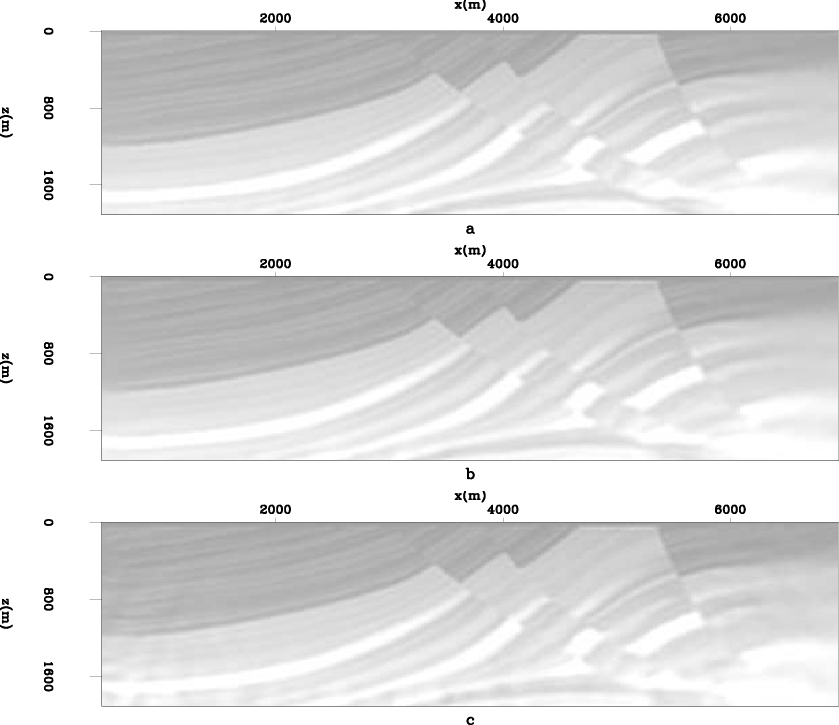|
|
|
|
FWI with different boundary conditions |
 iterations are run for each boundary condition.
Figure 3 shows inversion results using different boundary conditions. Inversion results from the random boundary condition and the absorbing boundary condition are very similar. Results from using continuation of velocity have more artifacts, in the side and bottom parts of the model where data fitting constraints are relatively weak. In other words, strong artifacts in the shallow part in the early iterations are eliminated by data fitting constraints as the inversion proceeds. So the artifacts pattern in the inversion results is different from the one in the first gradient.
iterations are run for each boundary condition.
Figure 3 shows inversion results using different boundary conditions. Inversion results from the random boundary condition and the absorbing boundary condition are very similar. Results from using continuation of velocity have more artifacts, in the side and bottom parts of the model where data fitting constraints are relatively weak. In other words, strong artifacts in the shallow part in the early iterations are eliminated by data fitting constraints as the inversion proceeds. So the artifacts pattern in the inversion results is different from the one in the first gradient.

|
|---|
|
vinvcompbw
Figure 3. Inversion results with different boundary conditions: a) with an absorbing boundary condition; b) with a random boundary condition; c) with continuation of velocity in the boundary region. |
|
|
|
|
|
|
FWI with different boundary conditions |